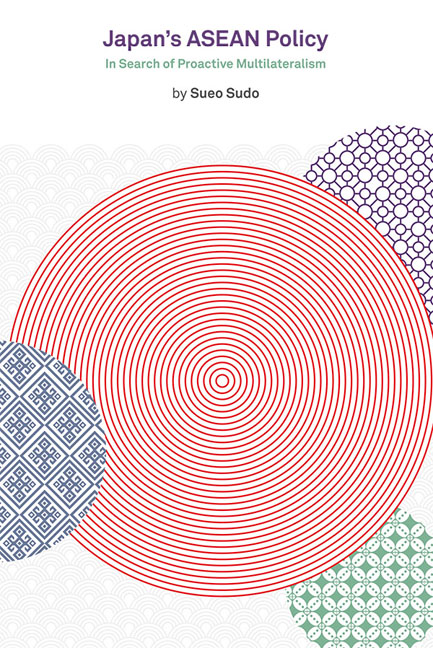Book contents
- Frontmatter
- Contents
- List of Figures and Tables
- Preface
- List of Abbreviations
- Introduction
- 1 ASEAN in Japanese Multilateral Foreign Policy
- 2 Embarking on Japan's ASEAN Policy: The Limitation of the Mainstream
- 3 Straightening the ASEAN-Indochina Divide: The Pursuit of the Alternative Stream
- 4 Consolidating an ASEAN-centred Policy: The Challenge of the Intermediate Stream
- 5 Fortifying a Japan-ASEAN Strategic Partnership: The Resurgence of the Mainstream
- 6 Towards a New Regionalism in East Asia
- 7 Conclusion
- Bibliography
- Index
- About the Author
1 - ASEAN in Japanese Multilateral Foreign Policy
Published online by Cambridge University Press: 06 June 2017
- Frontmatter
- Contents
- List of Figures and Tables
- Preface
- List of Abbreviations
- Introduction
- 1 ASEAN in Japanese Multilateral Foreign Policy
- 2 Embarking on Japan's ASEAN Policy: The Limitation of the Mainstream
- 3 Straightening the ASEAN-Indochina Divide: The Pursuit of the Alternative Stream
- 4 Consolidating an ASEAN-centred Policy: The Challenge of the Intermediate Stream
- 5 Fortifying a Japan-ASEAN Strategic Partnership: The Resurgence of the Mainstream
- 6 Towards a New Regionalism in East Asia
- 7 Conclusion
- Bibliography
- Index
- About the Author
Summary
It is almost a cliché that Japan's external behaviour is characterized by profound puzzles. Thus, it is no wonder that to many students of international relations, Japanese foreign policy remains an enigma. For instance, Japan provided the largest financial contribution to the 1991 Gulf War, but was never fully blessed by the United Nations. In a similar vein, despite its status as the second-largest economy (third since 2010) in the world, Japan has never tried to translate its economic power into political influence. Japan's position as the second-largest contributor to the United Nations’ budget has not yielded any matching role in the international community. Most of all, due to these gaps in perception between Japan's significant economic power and its influence on international events, Japan used to be labelled as an “economic giant and political pigmy”. After all these years, have these profound puzzles been resolved to the effect that treating Japan as an enigma is no longer tenable?
The central puzzle in the study of Japanese foreign policy has been why Japan has continued to play a passive role in international affairs, despite its impressive economic and political power. It is no doubt that the study of Japanese foreign policy has advanced remarkably in recent years. Especially noteworthy are the works by Glenn Hook et al. and Michael Green. Hook et al.'s textbook, for instance, is quintessential in the sense that it covers a vast array of information about Japan's diplomacy and economic and security relations in the post-war period. In addition to containing sufficient international relations theory, the works of the four authors offer a unique framework to explain the distinctive style of Japanese foreign policy. The “quiet diplomacy” characterization focuses on a range of consistently low-risk and low-profile international initiatives and is premised on a long-term view of Japan's national interests. In a similar vein, Green's book succinctly explains major changes in post–Cold War Japanese foreign policy. As he stressed, Japanese foreign policy has become more independent from the United States, more strategic towards Asia, and more energetic towards international and regional institutions. Japan's shift towards reluctant realism can be explained by changing international and domestic circumstances, such as the security concerns about China, domestic economic paralysis, and changes in political leaders.
- Type
- Chapter
- Information
- Japan's ASEAN PolicyIn Search of Proactive Multilateralism, pp. 9 - 30Publisher: ISEAS–Yusof Ishak InstitutePrint publication year: 2014



